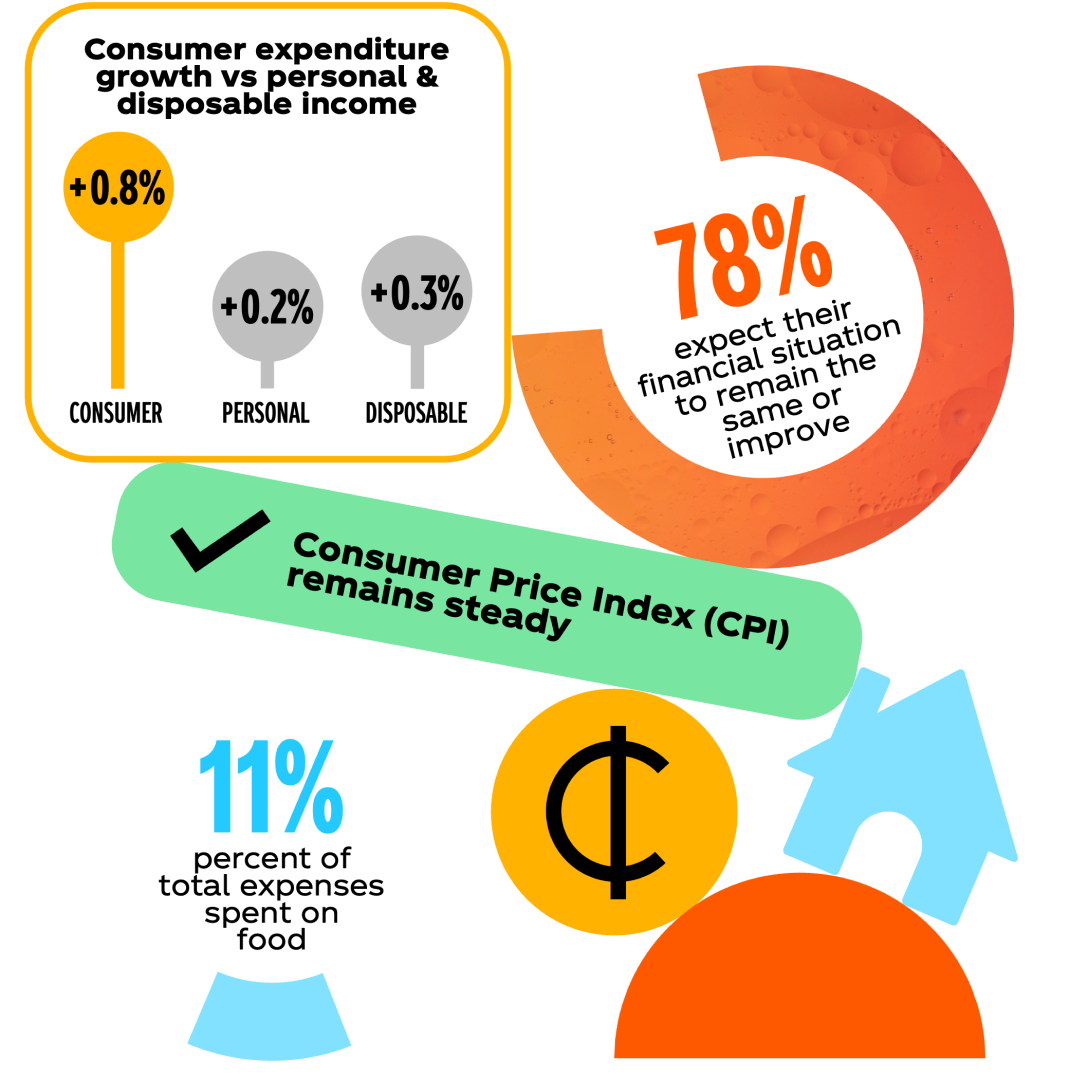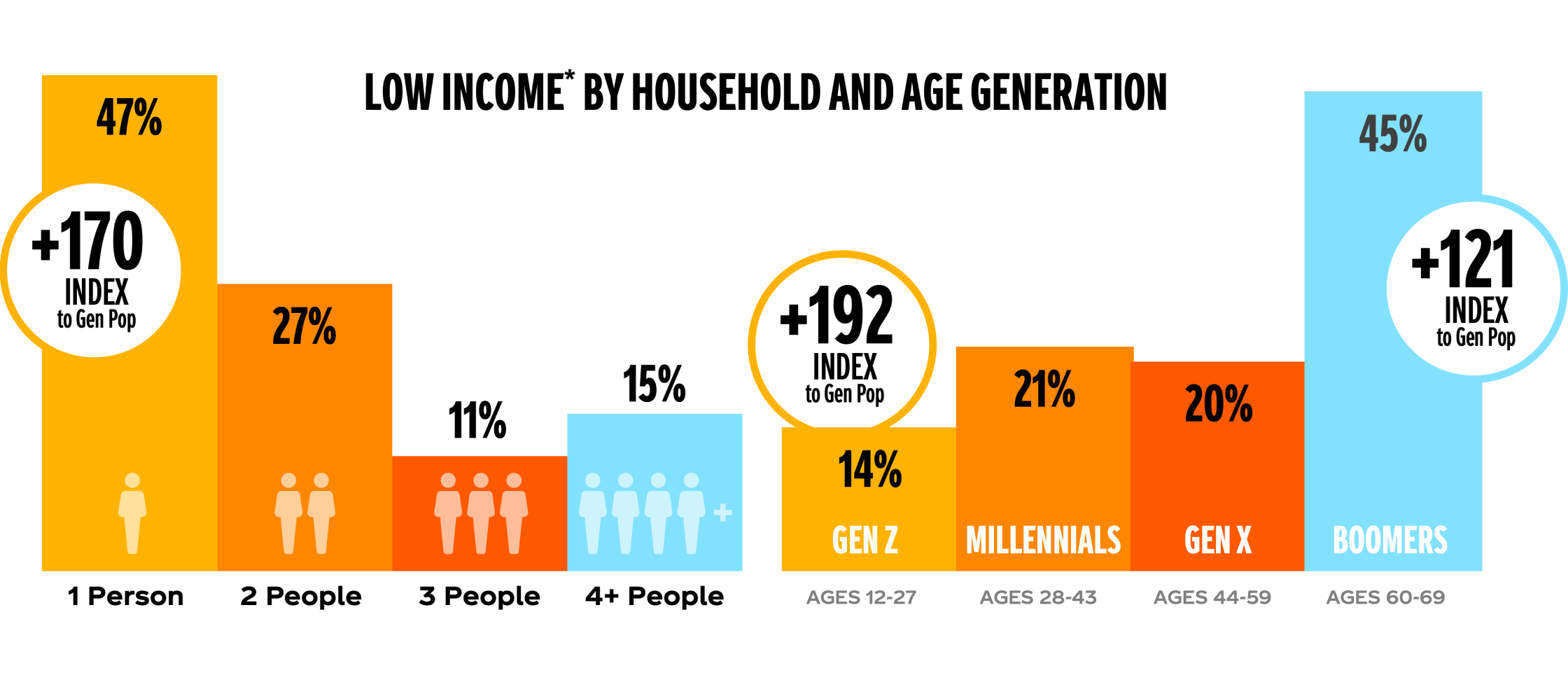View a screenreader-friendly version of this page.

Impact on struggling households
Over the past two years, increasing expenses such as housing, gas, and consumer goods have significantly strained many households. Despite some relief in these costs and economic indicators, they continue to adversely affect households with lower incomes.
However, focusing a strategy strictly on low-income consumers could lead to an oversight of other struggling households.
As we endeavor to delight all consumers, it's crucial to understand that solely considering income may only capture a portion of the narrative and how each household and shopper uniquely seeks value.

Source: USDA Q1 2024, Bureau of Labor Statistics, New York Fed May 2024 survey of Consumer Expectations
Low-income by household size & generation
Understanding how to provide the best value to households extends beyond income alone and demands a more inclusive approach. Why is this broader perspective crucial? Insights show that lower-income households predominantly comprise individuals from Gen Z and retired persons and often constitute single-person households. By focusing strictly on income, we could overlook struggling families and couples with similar challenges, creating an incomplete picture of the issue.

*Low Income is <$40k. Source: Numerator Insights 12MMT June 2024
The goal is to adapt to shoppers’ commerce needs
FAMILY STRUCTURE MATTERS
Supporting more people means steeper expenses
Revisiting the household categorization and including a variety of income levels relative to the number of individuals allows us to account for the more considerable expenses associated with larger households.
Our revised approach has already revealed crucial insights. For instance, food and beverage sales have experienced a decline not only in low-income households but also struggling families, struggling couples, and middle-income couples. These are households that our former perspective might have overlooked.
SEGMENTATION TO UNLOCK VALUE
Creating a broader segment of shoppers
These overlooked households may be earning a comfortable income on paper, but the realities of supporting multiple persons —each with unique needs and expenses— can result in a financial squeeze that mirrors the struggles of low-income households.
Moreover, the decline in food and beverage sales amongst middle-income couples suggests that households in income brackets previously considered safe from such financial strain are also feeling the pinch. These findings underpin the fact that value challenges are widespread and helps us frame inclusive, more effective strategies to provide the value they seek.
our inclusive approach provides more personalized value
Understanding the true household scope enables us to design programs tailor-made to meet their value expectations effectively and efficiently.
This way, our strategies address not only value but accessibility to the products they desire as well, providing a comprehensive approach to meeting the needs of every household, regardless of their financial situation.
As we move forward, our commitment must be to continue refining our understanding of market conditions unique to each household, who they are and where they reside.
Only through an inclusive approach can we ensure that no struggling household is left behind, and all consumers remain within reach of products and services that meet their needs and preferences.


Takeaways on rethinking value
While certain economic indicators, like lower inflation, are turning more favorable, American consumers are still feeling financial pressure, leading to a shift in shopping behavior towards a more conservative approach.
Value creation for shoppers encompasses consideration of household income, as well as size, family structure and location.
Understanding the true household scope enables us to design programs [and the right product mix] tailor-made to meet their value expectations effectively and efficiently.
WANT TO SEE MORE?
Discover more through the lens in the articles below.